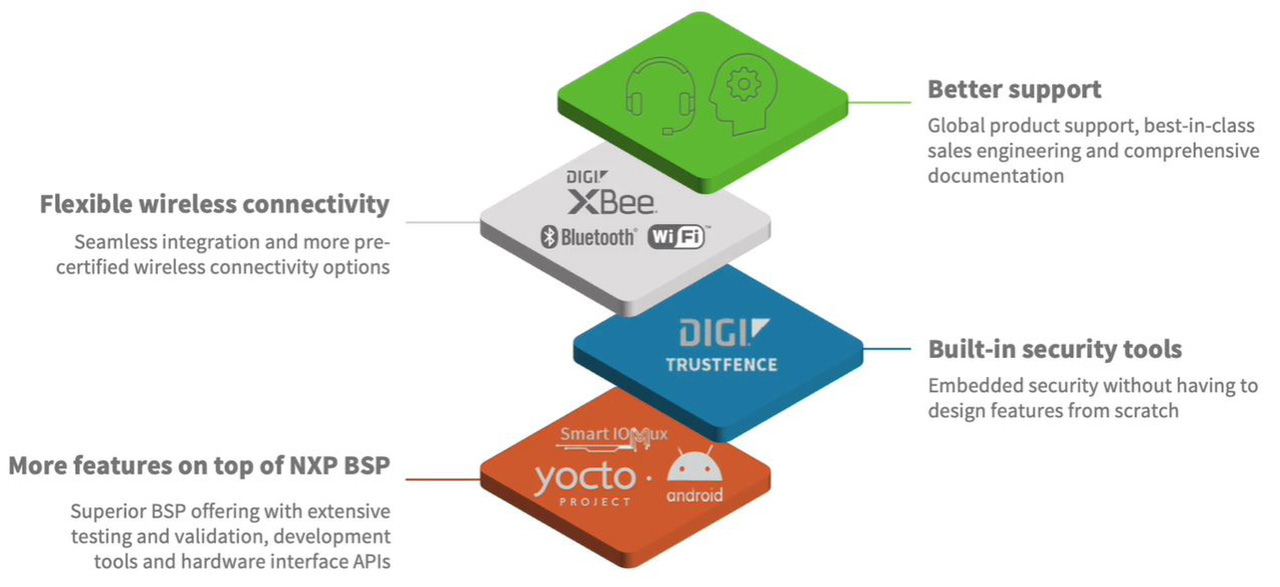Rising gas prices have motorists around the world looking for ways to cut their driving costs. And extreme weather events have heightened concerns about carbon emissions.
Against this backdrop, the growing variety of electric vehicles (EVs) on the market has more and more people making the switch (no pun intended) to plug-in transportation. Growth in the electric vehicle market means there is an enormous need for EV charging station design, and OEMs have a great opportunity.
In this blog post, we’ll take a quick look at the present and future of EVs, and review the opportunities they present for OEMs both large and small, who want a piece of this fast-growing market.
Additionally, we'll provide an overview of the developer building blocks for prototyping, testing, development, and go-to-manufacturing that can support your time-to-market goals.
Take me to developer solutions
EVs for Every Buyer
The day has passed when electric vehicles were only for the affluent (think Tesla) or the eco-conscious (think Nissan Leaf). The number and variety of EVs on the road is increasing daily, as auto makers around the world expand their offerings into broader markets. Electric vehicles are on their way to becoming ubiquitous.

Maybe the best example of this is Ford’s introduction of the F-150 Lightning, an electric version of the full-size pick-up truck that has been the #1 selling vehicle in the U.S. market for decades. In an enthusiastic road test (“Mustang GT acceleration [with] full-size-truck capability”) of this new vehicle, Car and Driver magazine noted that “Some 200,000 people have queued up to buy Ford’s electric pickup, before they could even see one up close or drive it. That’s 10 times the initial annual volume Ford was planning on for the Lightning.”
EVs at the Tipping Point
Electric vehicles are seeing enormous growth in the most popular and in-demand market segments — from sports cars and electric SUVs to long-haul trucks. According to an analysis by Bloomberg Intelligence, the percentage of EVs needed to spur dramatic growth in any given country is only 5% of the new car market. That threshold, says Bloomberg, “signals the start of mass EV adoption.” Several European countries illustrate this pattern.
 Germany, for example, crossed the 5% threshold in Q3 of 2020 and EVs now make up over 13% of its new car market. The United Kingdom hit 5% in Q2, 2020 and EVs are now over 16% of their market. In Scandinavian countries the growth is even faster, with Sweden’s EV market at 28%, Iceland’s at 51% and in Norway, which hit the 5% threshold back in 2013, EVs now account for a stunning 83% of the new car market.
Germany, for example, crossed the 5% threshold in Q3 of 2020 and EVs now make up over 13% of its new car market. The United Kingdom hit 5% in Q2, 2020 and EVs are now over 16% of their market. In Scandinavian countries the growth is even faster, with Sweden’s EV market at 28%, Iceland’s at 51% and in Norway, which hit the 5% threshold back in 2013, EVs now account for a stunning 83% of the new car market.
The U.S. reached 5% EV adoption in early 2022, as did China. Many other countries are close behind, and as the number of vehicles grows, so does the demand for EV charging stations and the infrastructure to support them.
EV Charging Anywhere and Everywhere
Compared with the cost, logistical complexity and environmental hazards of traditional petroleum infrastructure, to say nothing of the legal and regulatory burdens, clean, safe EV charging stations can go virtually anywhere. Apartment buildings are adding charging stations. Hotels are ensuring they offer EV charging for their guests. In higher-end buildings, EV charging stations will become a universal amenity.

The same holds true for shopping destinations, sporting venues, and workplaces — as well as highway fueling stations, convenience stores and truck stops, as electric-powered long-haul trucks become more pervasive.

For the companies who produce the components for EV charging infrastructure, this means a huge opportunity both for large companies and startups — especially for those who are first to market. Again, compared to traditional gas stations, the barriers to installation are almost nil. But these are opportunities that companies will need to seize quickly.
A $217 Billion Market Opportunity for Developers

The global market for EV charging stations is expected to grow from $19 billion in 2021 to $217 billion by 2030, for a compound annual growth rate (CAGR) of more than 30% over the same period.
For an idea of the market opportunity for EV charging, one only has to look at recent news stories. In July, 2022, General Motors, which earlier announced a goal of going completely electric by 2035, announced plans to work with a partner to develop a network of 2,000 electric vehicle charging stations at travel centers along major highways in the U.S. “We are committed to an all-electric, zero-emissions future, and ensuring that the right charging infrastructure is in place is a key piece of the puzzle,” said Mary Barra, CEO of the auto giant.
Building Blocks, Tools and Capabilities for EV Charging Developers

Developers have many factors to take into consideration as they launch a project such as EV charging station design. For example:
- What is the go-to-market goal?
- Will the EV charging stations be solar powered or mains powered, or both?
- What kind of functionality do you want to integrate into the interface design? A simple visual display, or one with streaming video for infotainment and advertising?
- Will the product line include models with and without an integrated payment system? And will the design include a physical interface as well as a mobile app?
- How will you ensure the product design is secure from cyberattacks, and how will you enable ongoing updates to the charging station firmware?
The Digi ConnectCore® ecosystem of highly integrated developer building blocks, tools and software can help accelerate your path through rapid prototyping, design, testing and certification. And when you need supporting engineering services, we have that at the ready too.
Scalable EV Charger Design with Digi ConnectCore 8

For OEMs and product developers eager to capture a portion of this market, the Digi ConnectCore® 8 family of system-on-modules (SOMs) offers the ability to build a range of functionality into their EV charging products. That functionality includes controlling the charging process as well as the wireless connectivity needed to connect EV chargers to secure payment processing systems and other applications, such as those that send SMS messages to owners’ phones when a vehicle is finished charging.
The Digi ConnectCore 8 family is built on the NXP i.MX 8 processor series. With scalable dual/quad-core performance in a cost-effective platform that measures just 40 mm x 45 mm, ConnectCore 8 is part of a full stack of Digi hardware and software that includes Digi TrustFence® security and integration with Digi XBee®. Most important, every ConnectCore 8 is tightly integrated with Digi Remote Manager® which enables charging station owners to monitor and update the software and firmware in their charging units remotely.

The Digi ConnectCore 8 family provides a comprehensive development platform with tools and libraries, as well as Android and Yocto-based Linux. Developers can begin prototyping with any SOM in the ConnectCore 8 family and then migrate to another module without starting over on the design process. This enables OEMs to get to market quickly with products in multiple models and price points from a single design. Here’s a quick portrait of the ConnectCore 8 family:
- Digi ConnectCore 8X
Based on the NXP i.MX 8X processor, the Digi ConnectCore® 8X features the Digi SMTplus® surface-mount form factor, with edge-castellated SMT technology or a versatile LGA option for access to all interfaces, including Wi-Fi and Bluetooth.
- Digi ConnectCore 8M Nano
Digi ConnectCore® 8M Nano offers exceptional graphics and a low total cost of ownership and streamlines development for industrial applications such as EV charging.
- Digi ConnectCore 8M Mini
This quad-core SOM is designed for longevity and scalability and offers video capabilities through a built-in VPU.
- Digi ConnectCore Smart IOmux Design Tool
OEMs can speed their time to market by using the Digi ConnectCore Smart IOmux tool, which helps developers build sophisticated designs compatible with a range of hardware platforms. The Smart IOmux graphical interface lets developers configure interfaces and automatically create full pin assignment and device tree Linux kernel configurations to match the desired functionality.
Digi supports developers with all phases of planning, prototoyping and development. It all starts with developer kits, like the Digi ConnectCore 8M Nano dev kit.

Get started with a ConnectCore Dev Kit
Differentiate Your EV Charger with a Voice Interface

For OEM developers seeking to differentiate their products from the competition, a voice interface is one high-profile feature that can set your product apart. Digi ConnectCore Voice Control is a ready-to use software solution for use with the full Digi ConnectCore 8 family of SOMs. Voice control makes an EV charger easier and more convenient to use and fits well into world in which voice interfaces are becoming the rule, rather than the exception.
Digi ConnectCore Voice Control provides real-time voice recognition and text-to-speech capabilities with a customizable 60,000-word vocabulary and support for 30 national languages — a huge advantage in the global EV charging market. In addition, because Voice Control is available with every ConnectCore module, it can be included as a feature with the initial product or be added as a future enhancement, without a major redesign.
Monitor and Control EV Infrastructure with Digi Remote Manager
.png?lang=en-US)
With EV charging stations in constant use by the general public, it is essential for EV charging station operators to be able to monitor and update their units remotely. Digi Remote Manager® provides critical information about the status and condition of each deployed device at any time, from virtually anywhere. Digi Remote Manager is a cloud-based solution that facilitates easy setup, mass configuration, maintenance and support for hundreds or even thousands of remote Digi devices.
Your Time-to-market Advantage: Digi Wireless Design Services

Creating a new product like an EV charger is a complex endeavor. Companies with expertise and manufacturing capabilities in one aspect of the project may need help to produce a fully functioning solution ready to compete in a crowded marketplace. This is where Digi Wireless Design Services can provide a major advantage.
The Digi Wireless Design Services team has a proven methodology and years of experience assisting OEMs and developers in every aspect of design, prototyping, certification and most importantly, in preparing products for manufacture. They can help a company save time and cost by avoiding dead ends or expensive board re-spins, and fast-track their development process to support rapid time-to-market and long-term product profitability.
Build vs. Buy?
Finally, with a market that is growing as quickly as that of EV charging, time-to-market considerations have to be near the top of every OEM’s product checklist. For key electronic components that have to function reliably in a wide range of environments and pass certification in countries around the world, the “build vs. buy” question is one that needs thoughtful attention. At Digi, we believe that our solutions and our expertise can help provide any company in this market with their best chance for both near-term and long-term success.
Welcome to the EV Future!
EV charging stations are a key element in a clean-energy revolution that is just getting started. Digi products and services are available to help the many OEMs in the EV industry who will help make these changes possible.
Next Steps